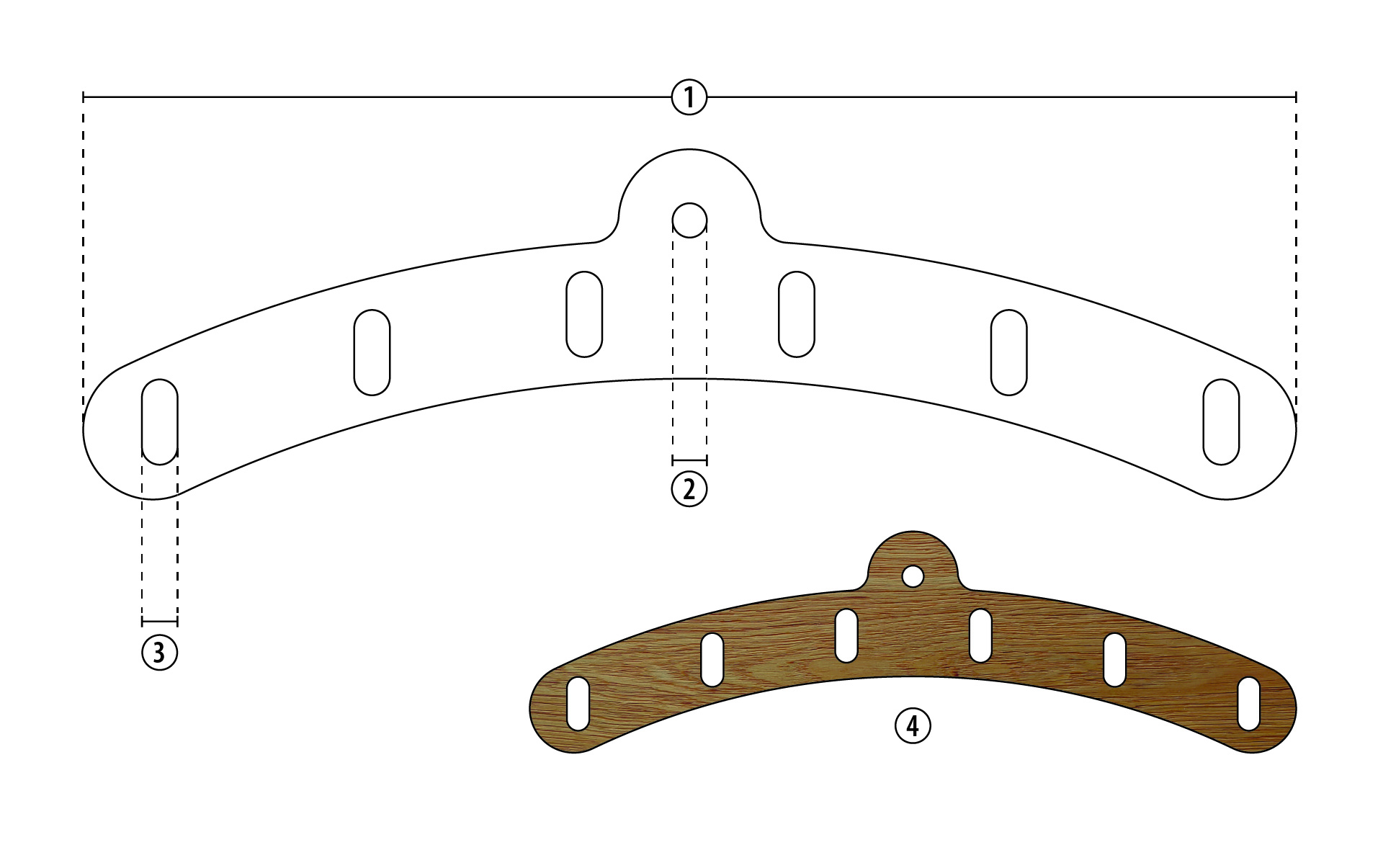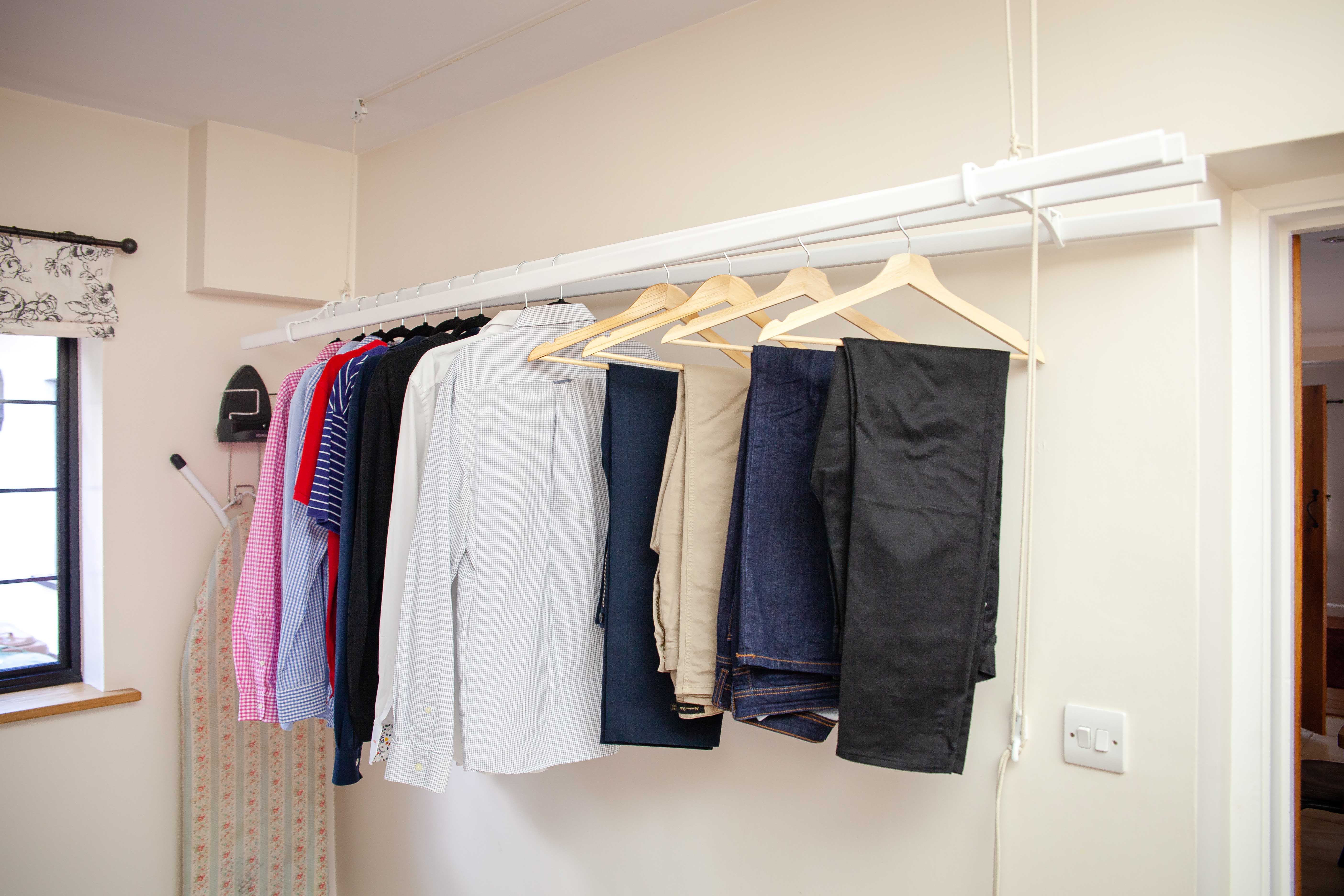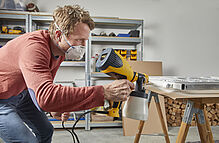Why it’s worth making your own space-saving ceiling clothes airer?
This type of ceiling-mounted clothes airer dates from the late eighteenth century and was typically used in European laundry rooms of large houses or estates: so it’s a real retro piece. With the help of the pulley system, the clothes airer is lowered from the ceiling so that it is easy to load or remove the clothes. To dry the laundry or when not in use, the clothes airer is then raised to the ceiling. So you have a space-saving clothes airer that is no longer in the way. But a clothes airer on the ceiling also makes use of an important law of physics: Warm air always rises, i.e. near the ceiling, damp laundry dries even faster when in the warmer air. The ideal turbo ceiling dryer.
A big advantage of DIY is, of course, that the ceiling clothes airer can be adapted to the individual colour scheme and space available – you decide how long and wide the clothes airer will be and what colour it should be! Building your own ceiling-mounted clothes airer is therefore not only very space-saving, ergonomic and practical, but also extremely effective for drying laundry quickly or storing clothes easily.
This type of ceiling-mounted clothes airer dates from the late eighteenth century and was typically used in European laundry rooms of large houses or estates: so it’s a real retro piece. With the help of the pulley system, the clothes airer is lowered from the ceiling so that it is easy to load or remove the clothes. To dry the laundry or when not in use, the clothes airer is then raised to the ceiling. So you have a space-saving clothes airer that is no longer in the way. But a clothes airer on the ceiling also makes use of an important law of physics: Warm air always rises, i.e. near the ceiling, damp laundry dries even faster when in the warmer air. The ideal turbo ceiling dryer.
A big advantage of DIY is, of course, that the ceiling clothes airer can be adapted to the individual colour scheme and space available – you decide how long and wide the clothes airer will be and what colour it should be! Building your own ceiling-mounted clothes airer is therefore not only very space-saving, ergonomic and practical, but also extremely effective for drying laundry quickly or storing clothes easily.








